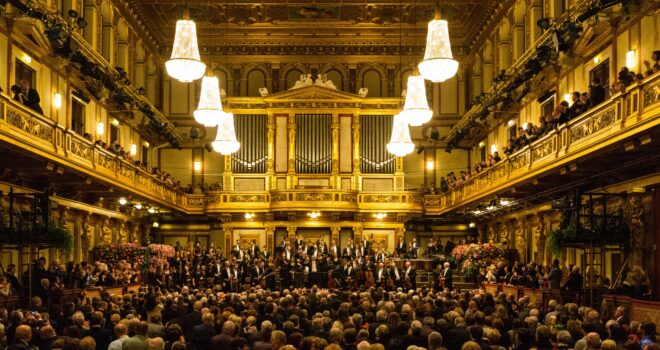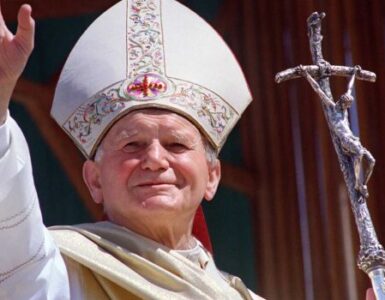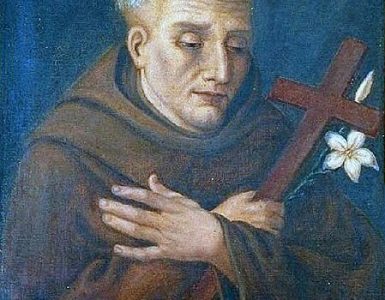At nobis ars una fides et musica Christus. (Paulinus of Nola, Song XX)
“There is for us but one art, which is faith, and one music, Christ.”
Prologue
The Church has always sung. In love with Christ, she knew that lovers sing to each other to draw from the depths of their hearts the most tender notes of love. “Cantare amantis est” wrote St. Augustine (Sermo 336): “singing is proper to those who love.” Cardinal Ratzinger, in A New Song for the Lord, wrote:
Faith is born out of listening to the word of God. However, where the word of God is translated into human language, a surplus remains of something unspoken and unspeakable which calls for our silence—the silence which finally changes it into song and also calls the powers of cosmos for help so that what was not said can be also heard.
Every song born of faith in this supernatural reality is something more than just the mere fusion of God’s Word and human sound. “Every genuine artistic intuition goes beyond what the senses perceive and, reaching beneath reality’s surface, strives to interpret its hidden mystery” (St. John Paul II, Letter to Artists). Art, more than most human activities, has the potential to become mysterium, a true sacred mystery, guiding the senses of those who experience it toward Him, who is the Source of all beauty.
I am a composer. I want to create music born from gazing toward this mystery, from listening to the “roar of torrents,” where “deep calls to deep” (Ps 42:8). This is no simple task. How can one translate into the sounds of a grand orchestra the “light silent sound” (1 Kings 19:12) that brushes against the face in the stillness of contemplation? What notes can follow the steps of Him whose “way was through the sea, His path, through the mighty waters, though His footsteps were unseen?” (Ps 77:20)? Each piece of music becomes a question, each invites us to “put out into deep water” (Lk 5:4), to dare to enter the unknown and seek words to describe the encounter with Him, who is “truly a hidden God” (Is 45:15)—Deus absconditus.
In this text, I wish to share a little about what the creation of such music might look like. Undoubtedly, every artist has their own reflections, methods, and tools in this context. For me, the key issue is the WORD.
Pascha Crucifixionis
Entering into an intimate dialogue with the Word lies at the heart of the composition I am currently working on—Pascha Crucifixionis. The composer tackling the subject of Christ’s Passion has a mountain to climb. The only solution for me seemed to be to develop a relationship with the Gospel text as close as possible, a kind of lectio divina that would continually feed the compositional process at every stage. This led to a concept far beyond a mere illustration of the events of Christ’s Passion and Death.
I have chosen the Gospel account of St. John as the basis of my composition. Here we find Christ, on the one hand, full of dignity, the Lamb of God who goes to His Passion certain of His eternal destiny, yet at the same time, very close to us, sometimes showing a face full of care and warmth, as in the scene with His Mother and the Beloved Disciple.
I decided to use the original Greek text of the Gospel to capture how it was heard by the first generations of Christians. To create a broader context for the narrative, I incorporated two additional textual layers that complement the Greek text, serving as formal pillars and commentary on the main action.
The first layer consists of Latin psalms with messianic content, which foreshadowed the events of the Passion and were ultimately fulfilled in Christ’s words and deeds. For example, the counterpoint to Jesus’ words in the Garden of Gethsemane, “Am I not to drink the cup that the Father has given me?” is Psalm 116 (Vulgate, 115), with the words: “What shall I render to the Lord, for all the things he hath rendered unto me? I will take the chalice of salvation; and I will call upon the name of the Lord” (Ps. 116 [115]:12-13).
Additionally, I decided to introduce another Latin element to the action, as a nod to the liturgical tradition. From the beginning of the piece, the stage is filled with choir and orchestra. However, just before Christ’s final moments, only the performers portraying Christ, the Virgin Mary, and the Evangelist remain on stage. The others leave the stage, “all the disciples left him and fled” (Mt. 26:56), and surround the audience. Then begins a dialogue, sung in Gregorian chant melodies, between Christ and the “crowd” surrounding the auditorium, a chant that believers will recognize:
Dominus vobiscum – Et cum spiritu tuo.
Sursum corda – Habemus ad Dominum.
Gratias agamus Domino Deo nostro – Dignum et iustum est.
After this introductory dialogue, the Preface of the Holy Cross is sung in a solemn tone by Christ Himself—both the Sacrifice and the Sacrificer, the High Priest and the Burnt Offering, who sings praise to the Father, “Who didst establish the salvation of mankind on the tree of the Cross.” In this way, the artistic Passion momentarily goes hand in hand with the liturgy, carrying the cross—the instrument of our salvation—in the sounds of music.
The second textual layer complementing the Greek Gospel consists of six Hebrew key words. These appear at crucial moments in the narrative and offer a kind of pause for reflection. The depth, meaning, and ancient resonance of each word, which echoes back to Christ’s time, allow for a moment of meditation and immersion in the abyss of the Savior’s Passion. Each word conveys an idea:
The Regret – in the scene of Peter’s denial,
The Man – in the Ecce Homo scene,
The Ascent – on the way to Calvary,
The Burnt Offering – before Christ’s final moments,
The Passover – at the moment of the Savior’s Death,
The Mother – in the final Pietà scene.
The three languages used—Greek, Latin, and Hebrew—are also the three languages in which Christ’s charge was written on the titulus placed on the cross. The universality of the reign of the Crucified King was revealed there because “many of the Jews read this inscription“ (Jn. 19:20). In a similar way, I wish to convey in my work the universal nature of Christ’s salvific mission, the Mystery into which every human being of all times was immersed on Good Friday, a day the early Church called Pascha crucifixionis.
Since the Latin psalms and Hebrew words will be played from recordings, I reached out to Christians around the world for help. The Hebrew recordings were provided by Hebrew-speaking Catholics from Jerusalem. I envision the Latin psalms being recorded by a monk who has breathed these texts his entire life. However, this still felt insufficient to capture the all-encompassing dimension of Christ’s Passover. Therefore, I decided to invite the faithful from around the world to contribute to my composition by taking the Bible in their own language and recording the short passage from 1 Corinthians 15:3-5, where St. Paul formulates the kerygma (“For I handed on…”). I plan to play the recordings I receive in complete darkness, right after the moment of Jesus’ death. I envision it as a sound tapestry woven from different voices and languages, demonstrating that the message of Salvation reaches every corner of the world and embraces people of all nations and tongues.
Epilogue
I recognize the challenge I have undertaken. The Passion story is rich with emotion and demands the utmost respect. Crafting a musical narrative for such a profound work requires deep reflection, inviting the audience to immerse themselves in Christ’s Passion as if walking the Way of the Cross. Yet, the project’s scope and the invitation to the international community introduce uncertainty—will it succeed? Can collaboration with various church and secular organizations yield enough recordings in different languages?
I trustingly surrender all these doubts to Divine Providence. I listen intently to the silence of the Word, searching for sounds for my composition. I accept the longing for phrases that would express the Mystery. I embrace as my own the following words of Hans Urs von Balthasar:
Music is the form that brings us the closest to the spirit, the thinnest veil that separates us from the spirit. Nevertheless, it shares the tragic fate of all art, and must remain a longing, a temporary state. This longing is the strongest in music precisely because music is the closest we can get to the spirit, though we still cannot comprehend it all. … Music is the limit of what is human, and beyond this limit, the Divine begins. (Hans Urs von Balthasar, The Development of Musical Ideas)
Author’s Note: To learn more about the Pascha crucifixionis project and how to participate by contributing a recording, please visit https://paschacrucifixionis.com. It takes just a moment and can help create a powerful testimony of our common faith.










